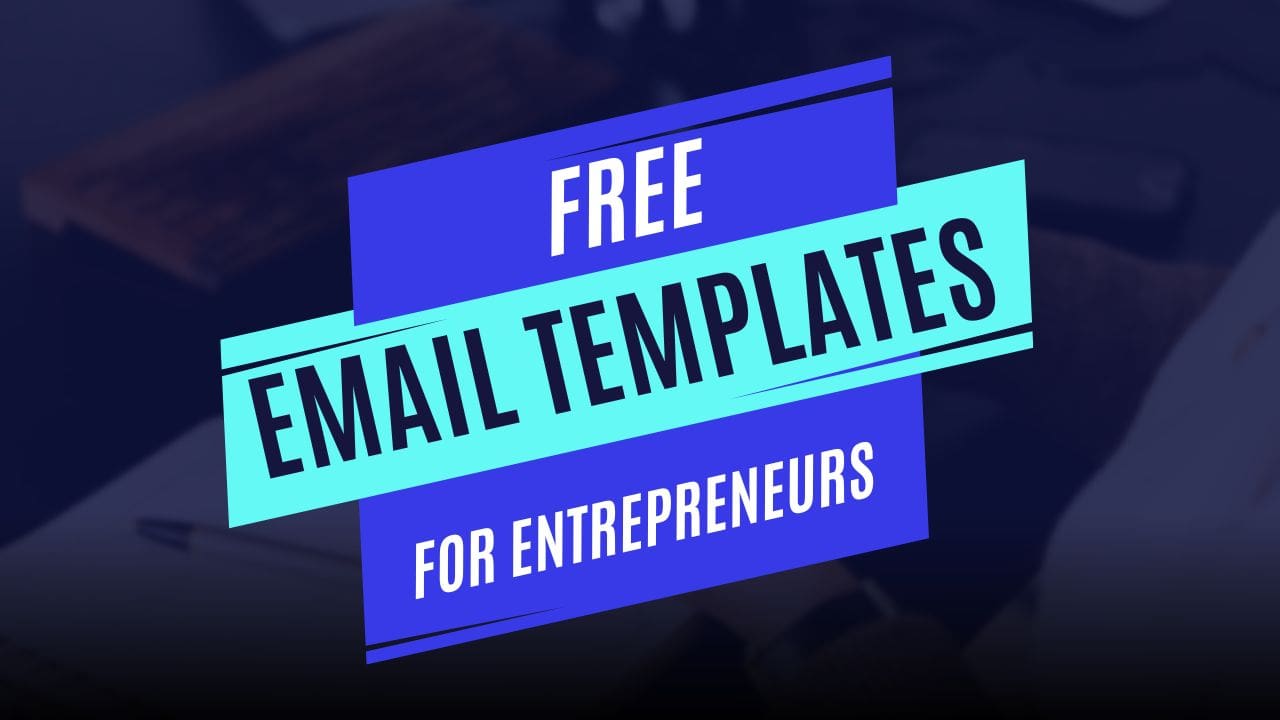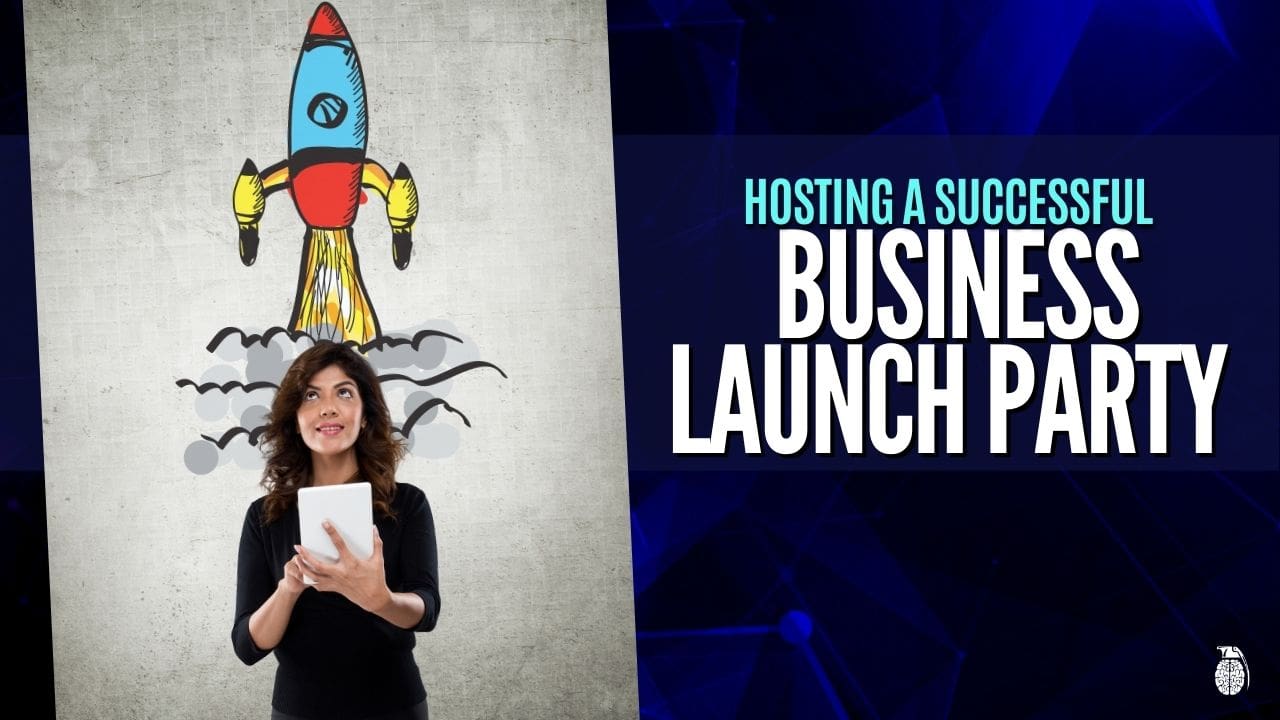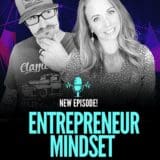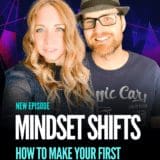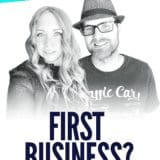Ep. 123 Make Your First Time A Success – Entrepreneur Mindset
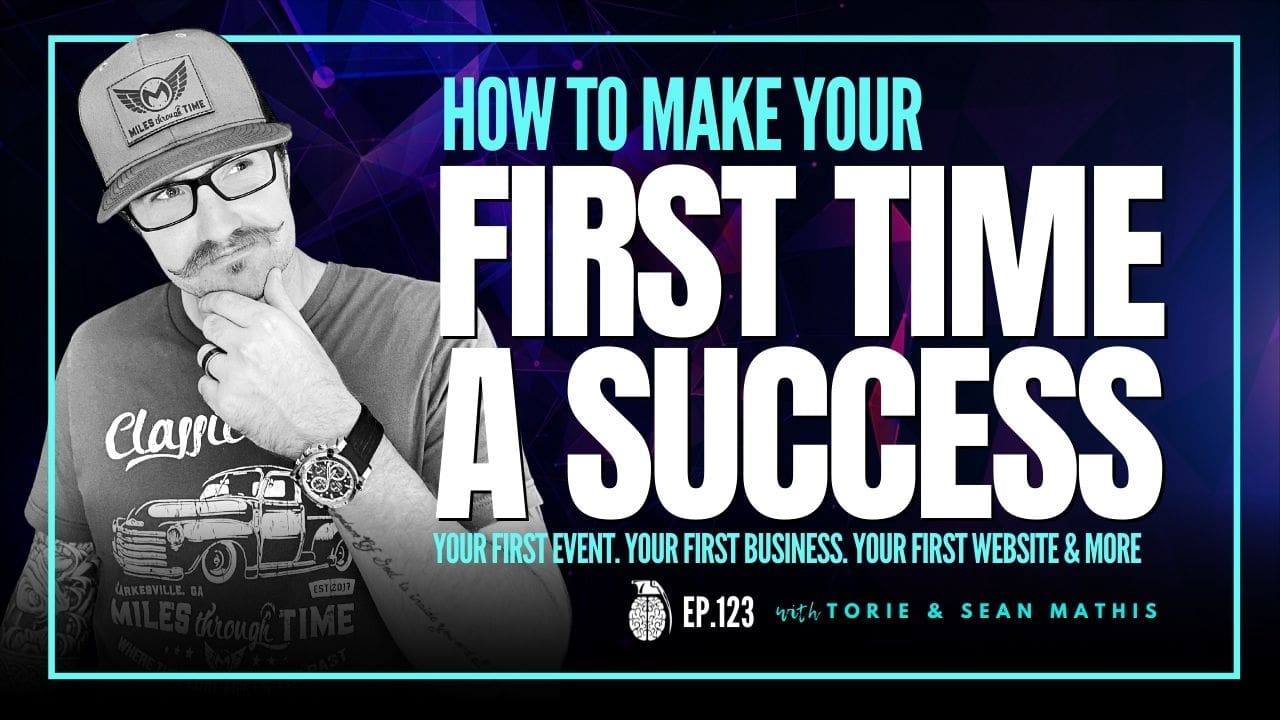
Make Your First Time A Success – Entrepreneur Mindset
Your first time. It can be rough. Your first business, your first event, your first website – all firsts that we sabotage, sometimes to the degree that we talk ourselves out of them before we even start.
In this episode, Torie Mathis and her cohost Sean talk about how to make your first run a success, how to keep a project moving forward even when doubt sets in, and how to avoid the BIGGEST sabotage that will make any first a flop.
Listen or watch the full episode below:
EPISODE TRANSCRIPTION –
(transcription is auto-generated)
SAF 123
[00:00:00] Torie: Like, if you have a big idea, like that is great and you definitely want to take steps to move forward, but you don’t need.
Hey, what’s up. It’s Torie Mathis, your host, and I’m here with the one and only Sean Mathis, founder of Miles your Time Automotive Museum.
[00:00:23] Sean: What’s going on.
[00:00:24] Torie: You know, for the last few years we have put on quite a few events mostly. With associated with the museum, some other things. And ever since we started putting on events, I’ve noticed that we have a lot of people that come to us and either ask us for advice on how to put on events or they actually ask for our help.
And I think what we found on a lot of them, and especially when the event kind of burns out and doesn’t end up happening is that people try to just way over-complicate things, especially when it’s their very first time. And it’s a very, like a, it’s a brand new idea.
[00:00:59] Sean: Yeah, it’s easy to go. And like, especially if you go to an event and you’re like, this is an awesome event. I’d love to do this myself. And you’re instantly comparing it to something that, that, that, that organization may have been doing that event for years. You know, that was not their first one. That was so awesome because chances are, if you go to somebody’s very first event, there’s going to be some telltale signs that this might be one of their first events because it’s going to be. A little disoriented. They’re not going to be perfect.
[00:01:30] Torie: A lot of times they start out smaller too, which is actually really good to start out and not really have a lot of people show up because then you can work out the details with less people.
[00:01:42] Sean: I said the first, the first car show we put on with Miles Through Time back in 2017 I don’t remember exactly how many we had, maybe 50 cars showed up. But it w it was the first event that. Ever been in charge of and I tried to get as much help as possible, but like, it, it really only got so big, but since then, you know, I took what I learned on that first one and applied it to the next year and then the next year, and you know what, now four or five and like big car shows and that doesn’t include the smaller ones that we’ve done as well.
But I know I now know so much more and know what needs to be done and You know, in any of these events, you can’t do them by yourself. So I, I know now more where I need additional help and that kid that really hit home when we did the world record event. I, again, we’d never done that type of event before, so, I mean, again, we learn certain things that worked and didn’t work well.
[00:02:43] Torie: And we did it in the middle of COVID, which was actually probably a good thing, because could you imagine how big that would have been? Like, it ended up being so much bigger than I expected anyway, but I think COVID allowed us to pull back a little bit.
Like I wanted food trucks, I wanted to feed people. I wanted, like, there are things that like I thought would be really cool and we both had like all kinds of ideas that would have been cool, but it was probably good that. Like life forced us to pull back a little bit because there’s a lot of moving parts in these things and I don’t think people realize sometimes.
So I think it’s better. Like if you have a big idea, like that is great and you definitely want to take steps to move forward, but you don’t need every bell and whistle and every little thing that would make it super cool from the very beginning. In fact, that’s probably gonna make the event worse by trying to throw all those things in.
[00:03:32] Sean: Yeah, I think just doing like, if an event is what you want to do, just do it and plan for it to be small, you know, it is okay. That not a whole lot of people go there because if it is your first event, you’re going to want that opportunity to make some mistakes and make those mistakes in as few of in front of his few amount of people as possible. Because you will, you will make mistakes.
[00:03:55] Torie: Well, and we even talk about it with clients, with websites. Like if you have a brand new venture and you want a website, like there are people that come in and want, like the biggest website, like I want this a hundred page website with all these things and, you know, try to work on all these different pages and details and things.
And a lot of times when you’re first starting out a venture things change and you. I don’t know exactly where things are going to go. It’s kind of crazy how they kind of take on a little bit of a life of their own. And you kind of have to be able to be flexible and pivot with where it’s actually going.
And I think a website is the exact same way. We were talking about automotive museum guide. Like we have a website that we created automotive museum guide when we. That the museum, small museums were really hard to get found because they kind of get buried away with all the other ones. So we created a directory of automotive museums in North America and Where it was in the very beginning.
I mean, it just started out a map was Sean’s original ideas. Like I made this map and it’s awesome. And so we kind of built the website around that map, and then we added all the details for every single museum. Then we went in there and started categorizing them and figuring out like, how can we make this work better now that people are actually coming to it?
How can we make it work better? How can we make people be able to find it easier? Like what are people going to do when they come and land on it and where do we want them to go? And so all of these things kind of came in time. If we would have tried to get it where it’s at right now, from the very beginning, I think we would’ve quit.
And it would’ve been, yeah, it would’ve, it probably actually, yeah, it would’ve been probably, we probably would’ve took it the wrong direction because we didn’t really know. How it was going to work out. Like it’s one of those things that you don’t really know what you have until you kind of start really going through it.
[00:05:47] Sean: Not to mention, like when we launched the website Automotive Museum Guide.com was available for you to go to at any moment. I think we have. I think we thought we may have made the website live with the very first listing of Miles through Time, I think we just had the map and then just started getting websites as they go.
So, you know, in one day it went from one to 20 and then over the course of a week, maybe we had a hundred. I still add museums to it when I find them, you know, now we’re at over 300 13 of them have closed since we’ve started. But there’s another eight that are opening right now and it’s still, you know, there’s still going to be stuff out there that I’m not going to know until I find it. And when I do, I just add it.
[00:06:37] Torie: Well, I think that that’s okay too. You also find other ways that people are using it or other, like, for example, we have found that a couple of the museums are actually using the automotive museum guide page as their actual website because they don’t have a website. Like we could have never planned for that.
But how cool is that? That now we can make every, like, what can we do for these museums so that they could this page a little bit better, you know, what information can we get from them? How can we make it so that it, it works better for them. And then that they, in turn, drive more traffic to our website. Like we couldn’t have planned for that.
[00:07:13] Sean: No, but that was also part of the reason that we did it was to help keep these museums alive because they, don’t not, all of them have their own websites. Not all of them have social media pages. Like some of them are. I, there was one I had to go back. I’m like, is this still really a museum?
Because there’s, there’s nothing about it. Other than a couple of random articles. I mean, it doesn’t even have a Google business page. It doesn’t have a website, no social media for it, but it does have a name. It’s got an address and a phone number and there’s, there’s stuff out there where people talk about going to it still is it’s, it’s a place.
But it’s one of those things that if you didn’t know about it, you’re really not going to know about it. And I don’t know how these places stay open as long as they do, but a lot of times it’s a collection or something that it doesn’t really matter, but, you know, in that case may not matter to who owns it already, but it’s pretty neat to be able to visit something like that and have the opportunity to know about something like that to go.
[00:08:12] Torie: You know, both of us starting our businesses too. They’re very different than how we started them. And I don’t think that we could have planned for them to be where they are today. And I really liked that there’s that, that flexibility and that, that ability to pivot, I think that when people are afraid to pivot or stay way too strict on what they originally started off, I think that’s when some businesses die projects die.
Absolutely not you, you don’t really know what’s gonna what you need and what. Customers are going to want until you actually start working through it. It’s like the whole, you can’t learn how to swim from reading a book. Like you really have to go in there and actually start working through this stuff to figure out what’s going to happen.
When I first started my business, it was out of necessity when the real estate publishing house that I worked for went under because of the real estate market crash. And I continued to do the magazines, but I did like logos and a couple of brochures. I didn’t even really know how to do websites back at that time.
But once customers started asking me for websites, I went and took all kinds of courses and taught myself how to design websites. Then when people were asking for social media, I did the exact same thing, and I kept investing in myself and learning new skills so that I could adapt for what my customers wanted so that I could be more valuable to them.
If I would have stuck with, you know, just doing logos and brochure. I would probably be kind of bummed out. Like it probably wouldn’t have been as exciting, like, because I, for me, I like that I am able to change and get a little bit better and things like that, you know, and for you, with the museum, you didn’t really know exactly what was going to work when you first started.
So you kind of threw out a few things and then kind of like wiggled into it to figure out what was going to work with it. Right. And the thing that you had, I’m assuming yours. You didn’t even know how to do some of this stuff. And it wasn’t until a customer was like, can you do this? And you were like, yeah, I could do that.
So I honestly believe I can figure out how to do just about anything. I think now that I’m a little bit older and a little bit further into my career now I’m not as willing to do everything. I kind of, you know weigh it out a little bit more.
[00:10:25] Sean: But now you’ve got a lot more to compare it to now. You’re like, well, I’ve done something similar to that. And that’s not my thing. Or you know, more people and you’re like, you can go use this person and.
[00:10:34] Torie: But in the beginning, woo. Heck yeah, you asked if I could do something I’ll.
[00:10:39] Sean: Yeah, I figure out how to do it.
[00:10:40] Torie: And then, then I know if that’s something I really wanted to do. And there were some things that we tried that I’m like, I never want to do that. Like we did Chachi shit for awhile. We printed we had like a vendor accounts and then we went and found the vendors and we printed t-shirts and pens and like, things like that for people. I don’t think that was really, I didn’t really care for it that much. It just wasn’t didn’t bring me joy.
[00:11:04] Sean: Yeah, I, that we would have had to like, and we almost went down the route of investing in our own printing equipment and looked into all that.
[00:11:13] Torie: Well, we did the vinyl stuff, a little bit of it. Like some, we did a little bit of vinyl cutting. Did we did, we did some stuff for ourselves kind of to see what it was going to be like.
And we did a few t-shirts and things like that, but it just wasn’t the thing.
[00:11:27] Sean: At the antique Mall Museum, there is a screen printing equipment right outside the exit of the museum. Right now. I looked at it and I’m like, no, Nope, I don’t want to do that, man.
[00:11:39] Torie: But you know, things like that are always a possibility for anybody, like whatever it is that you know, the project that you have, if what you’re doing, isn’t like really like getting you excited.
You can always like try to bring in these little things. It’s okay. That you didn’t have like this master plan and that wasn’t part of the master plan in the beginning. In fact, I think it’s better if it’s not part of the master plan, because when you have the master plan, sometimes that over-complicates it so much that the master plan never happened.
Like these events that drive me crazy. Sean had one recently, we both spent some time on it and they had so many people involved in it. And there were so many details and like trying to like over detail it that I think it would have been good just to kind of, let’s just do it small dozen people test run it. Then the next year we would have some data there that we could say like this worked, this didn’t.
[00:12:29] Sean: That it would have been better to have done it this year on during the weekday when less people knew and just kind of taking that opportunity to work out some kinks. And, and then from that immediately start planning for the following year on a date that would be easier for more people to attend.
Spend that year, you know, getting sponsors and, you know, co you know, not over-complicating it, but adding more details to it than what we would have initially done.
[00:13:01] Torie: And instead kind of proven the concept to that. Okay. This is actually possible on this small scale. Now, if we took it a little bit harder, bigger, cause you don’t know what you know, until, you know.
[00:13:15] Sean: What we were initially talking about doing, we could have just done. I mean, you, you created a logo for it. We could have just been like, all right, that’s what we’re going to do. And if two cars showed up, it doesn’t matter because we still put it out there as doing it, and then still could have, then been prepared. Do it bigger and better the following year, but at least we got that initial one out.
Like it was a big miss on a learning opportunity.
[00:13:45] Torie: I agree. Especially on things like that, that it wasn’t going to be in one static location. It was actually going to be a moving event, you know, with the electric vehicles. And so it would have been a good time to at least dry run it and see what’s going to happen.
I think when people do like motorcycle events and things like that, they obviously run the course first. Right. And that would have been the opportunity to run the course. And I think you can kind of run dry, run, run the course with small amount of people for any type of event or things like this, just to get a feel for what’s actually.
[00:14:17] Sean: Done it for, like, there was a minimal cost to it. There was a little bit of time from some various people, but it was also in conjunction with an event that was already going on. So it’s not like anybody was completely going out of their way for the rental location or nothing like that. Torie created a logo.
Nobody got paid for that. Nobody paid for it. It was, it’s just it’s there. And I mean, so initially there was, there’s really no reason financially to not. But again, the data we could have collected from that to then apply to the future year where we could then go, well, we need X amount of sponsors and all this funding and all these things that we then want to do. And it’s, it’s still bums me out that we didn’t do.
[00:15:00] Torie: And then I think the want to do things are a good point because anytime you’re starting anything, even like when we started the podcast, like there was lots of things that would have been nice to have. But we didn’t even know if it was going to be our thing yet.
Like we did say let’s do it for, I don’t remember, you know, 50 episodes or whatever. Let’s try to get it going and figure, you know, feel it out and see, but we didn’t set up anything. Really. We had like a little backdrop behind us and we sat in front of, you know you know, a camera and that was pretty much it.
We did have like a small light stuff like that, but it, we added things on after that, even some of the promotion and the other things that I do. I didn’t do all of that stuff in the beginning. And I think even where we are now, I think there’s going to be different things that we do in the future, but we’ve worked out like so many details like that didn’t work shit that didn’t work screwed that, you know what I mean?
That once it, if we were really big, when we started off and it came out all shitty, like everyone, like, what the hell are they doing? You know, it’s good that nobody listened in the. 50 episodes because they weren’t very good. The sound wasn’t very good. We had some hiccups and things like that. So you had to mess things up a little bit on a smaller scale. I think that’s a good thing to do, right.
[00:16:11] Sean: And not to mention the you put all this emphasis on having everything, you know, as, as grand out from the gate and having it as perfect as you possibly can. Okay. What happens is then you wind up being disappointed and that disappointment can send you down a road that nobody wants to go down.
[00:16:32] Torie: Especially if you put a shit ton of money on time is wasted.
[00:16:36] Sean: Money is wasted. You feel bad as opposed to just like, Hey, let’s see what happens and get it out there. Yeah, try it out and they’ll do it again and knows a little bit better and a little bit better. I mean, so many people get caught up on, on having to have everything so perfect and grand and they forget about what it was like to play.
T-ball, you know, first year hitting the ball off of the stick and you know, you’re not very good at it. The ball is sitting right there and they still mix it, you know, and then they finally hit it and you start running and balls go past you. And then finally you start to catch balls. You’re hitting balls better.
But it’s after. Tons of practice and practice and practice. And I think people forget that shit still takes practice. Like you are never too old to stop practicing.
[00:17:21] Torie: This part of it though is like, even in baseball, you know, if you’re using baseball for an example, you look at the, it looks so easy. It’s so like effortless, but it’s all that practice that gets it to look effortless, you know, making, you know, you tubers that make videos or people on their social media that have all these really big productions and things.
It is really easy to look and go like, oh my gosh, Hey, like I could do that. And maybe I could do that, but you get in there and you realize there’s a lot more details and stuff like that. That it’s definitely good to keep things super simple from the beginning. Work, some things out, add some things. And you know, you’ve talked about the car show.
We definitely, every year we add a little bit more to the car show, you know, a little bit more, a little bit more, but if you add so much, so many things so quickly, like it’s a little overwhelming and I could see that, that, that would scare people off from even taking the opportunity to go out and try these new things.
Cause I think that every business owner, I think every kid, like you gotta go out there and try to do new things, just like the shit. Like we didn’t know if that was going to be our thing, but we tried it if we wouldn’t have like, maybe that would have been like the greatest thing ever and would have made us the million dollar.
That’s when I very first started, like, I was just trying to do some business stuff, but it didn’t cost a lot of money. I went to like different events and I set up a booth and. Sold dip mix there’s my own dip mix. So it wasn’t like I bought somebody else’s dip mix. I don’t know if that.
[00:18:58] Sean: That goes back to like what we typically do, that, that came out of nowhere, just all of a sudden dip. And then it was like, well, here’s a name, here’s a brand. Here’s, let’s go with the spices and let’s go out. And then, and then it was just as fast when the,
[00:19:15] Torie: I actually, I got busy enough at work that I wasn’t going to go out and hot dip, but you know, when you’re starting out, sometimes you got to do some of that stuff just to figure stuff out.
[00:19:27] Sean: Oh. If anything though, like, like that, maybe we didn’t sell a lot of dip, but it was a perfect exercise to practice what it was like for real to create a brand. I mean, that. We created a brand for that know,
[00:19:43] Torie: I had orders. I had multiple bulk orders come from Etsy. I got on the home page of Etsy as like one of their new spotlight P like there were some really cool things that came from it.
I learned how to take really nice product shots and, you know, product photography and things like that. And I mean, I think that’s why I got on the Etsy thing. No. It was a means to an end at the time. And then I took what I needed from it and was like, okay, dip, isn’t my thing. Standing there at these events is not my thing, but there are things that I, like you said, I took from it and, and probably still use some of that stuff today.
[00:20:20] Sean: Absolutely need to look back.
[00:20:24] Torie: Especially when we’ve moved so many times. I think this last time we moved. They are the time before we pull out a box and we’re like, what’s in here. Oh my gosh. It’s Millie, Millie rappers. Like the packaging that we had been pulling around for like 15 years.
yeah. Yeah. I thought that was some, something else. It’s something important. I think I finally got rid of all the little little rapper type things, little, all the labels, the labels that’s us, you know? No, we do not need those anymore. At least we don’t actually, we’re not carrying around all the extra spices that we had bought at that time on bulk, because we had those for years, two bags of spices, you’d open it up and like, woo.
Ah, this is funny. So, but you know, if we would have said, you know, we’re selling dip and we would have bought like all this equipment and like, you know what, you would have been so invested in it that, oh my gosh, to not do it, like you probably would have kept on doing it even if you were miserable, because you’ve put too much into it.
I thought, I suppose there’s. There is a balance of having skin in the game. And so you, you go through difficult times because some of this stuff isn’t easy. But then there’s a, I think another hand that if stuff is just not your thing, like figuring out how to get it out, like the chotsky shit like that just wasn’t the thing.
[00:22:00] Sean: Well, I think you can commit to something without having to commit to the top level of it, like your commitment. Can always be the same. It can always like you’re fully committed to do it at the level that you’re capable of doing it that time. And then when you can level up, you’re still at the same commitment level.
You’re just committing to that next level. There’s no, if you commit to the level you can’t achieve, you’re destined for failure.
[00:22:24] Torie: Yeah. I think with some things like business ventures, I think if you’re serious about getting into it, I think you do need to say, I am going to try this for a year or two years or whatever it is.
Yeah, definitely. But you don’t have to like stockpile all the details and all the equipment and all that, everything before you start, because I think those are things that you need to work on and get as you go along because otherwise. It’s a little overwhelming and you ended up getting the wrong shit.
Like you don’t know what you need until you get in.
[00:22:55] Sean: What was it in Boise, the office. But they’d go and they buy the fancy office and all the equipment. And then the business fails because they spent all this money on office equipment that like not even equipment. Furniture chairs and shit that doesn’t matter.
[00:23:09] Torie: Yes. When I, when we were in Idaho I hired a graphic designer, and one of the guys that I went and I would have people I’ve worked, do a couple of projects with people just to make sure that they were a good fit. And this one guy, he was like had been an advertising whole by, and she was very cocky but said that he was in the beginning of launching quite a few marketing agencies and all of them, what they would do is go take out loans or get investors or whatever.
Like a lot, like 50, 60, $80,000 and rent out some really nice place and get all new furniture and have it so that when they brought clients in, they looked super, super fancy so that they would be able to get clients. But I was like, Ooh, it’s like, that’s not how I want it. Like, that’s not really what my plan is, but you know, when you’re paying for all that stuff for your first clients, all the money goes back to paying that.
[00:24:04] Sean: Stupid furniture.
[00:24:06] Torie: So whether you are, you know, having an event or you’re starting a new business venture, or maybe you just want to try out some new services for your business, like definitely go out there, try this stuff out, try something new, see what you think about it, but don’t get bogged down in the details.
Don’t make it don’t over-complicate it. So that it’s so difficult to actually do that. You end up not doing it, like it’s okay to dip your toe into something. But make sure that you’re still committing to a certain amount of time so that you do put in the proper amount of effort and then you can add and make things.
They make things better, you know, work on the details as you go. I think that’s a way that anybody can start something new and get something launched, start a new event.
[00:24:48] Sean: Yeah, for sure.
[00:24:49] Torie: Yep. So we have new shows every Tuesday and Thursday, and we would love it if you would come and check us out and we will see you on the next one.
Resources for your business
🚀Join the SMART Arsenal - The SMART way to Marketing + Grow your Business
🤩FREE Resources: https://bit.ly/3esCoBN
😎Tools We Use + Recommend: https://bit.ly/3xTW218
✅Our favorite Freebies
2 FREE Audible Books➜ https://amzn.to/31ZPDqb
Up to $100 off at Fiverr➜https://bit.ly/100offFiverr
Kartra - 30 days free + free training➜ https://bit.ly/3bcmXvf
Kajabi - 14 days free➜ https://bit.ly/3w3gISL
Creative Market Freebies➜ https://bit.ly/3bdlDIJ
Canva Free Version➜ https://bit.ly/3uw0np1
Free Adobe Stock Photos➜ https://bit.ly/freeAdobestock
YOU MAY ALSO LIKE
Hi! I'm Torie!

You don’t need crazy tech skills, buckets of cash, or dedicated staff to market your business. You don’t even need a lot of time.
What you need is to be SMART.
Smart Marketing For
Get Smart AF
DELIVERED TO YOUR INBOX
from your Digital Marketing Coach Torie Mathis!
Let's get SMART!
Let's Connect!
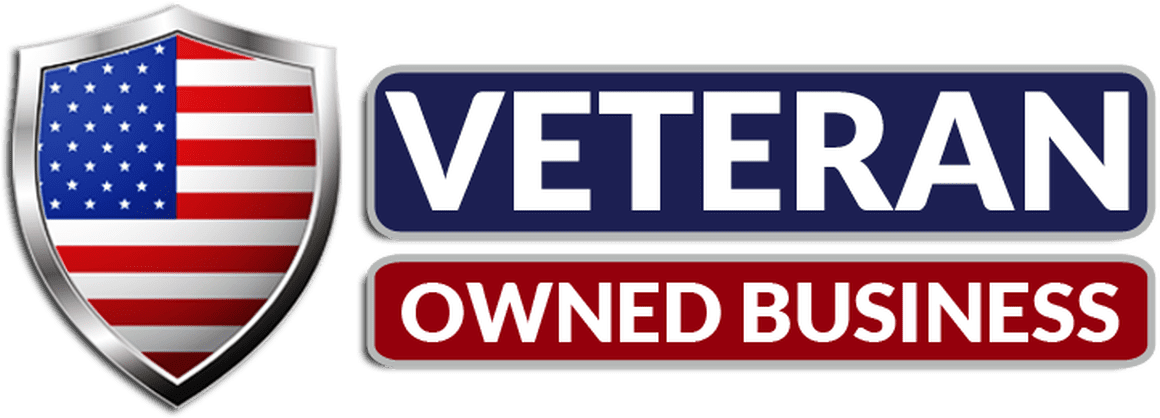
*Posts may contain affiliate links. If you use these links to purchase, I may earn a commission at no additional cost to you.

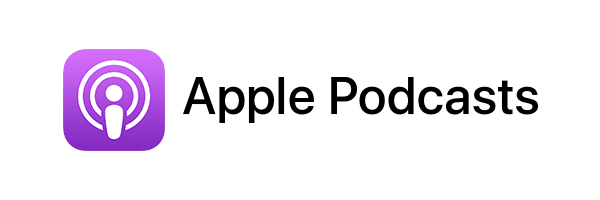
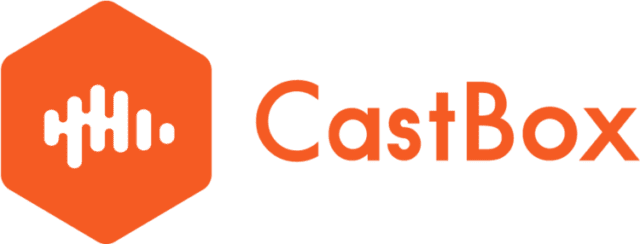

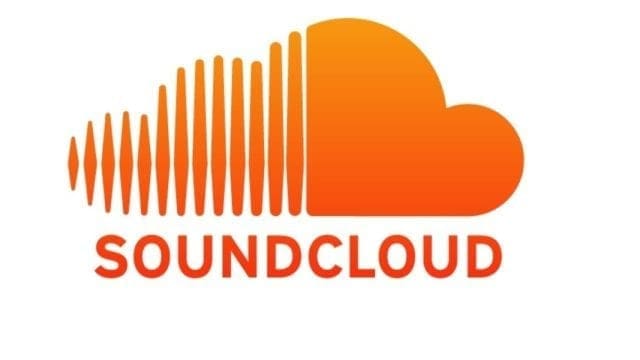
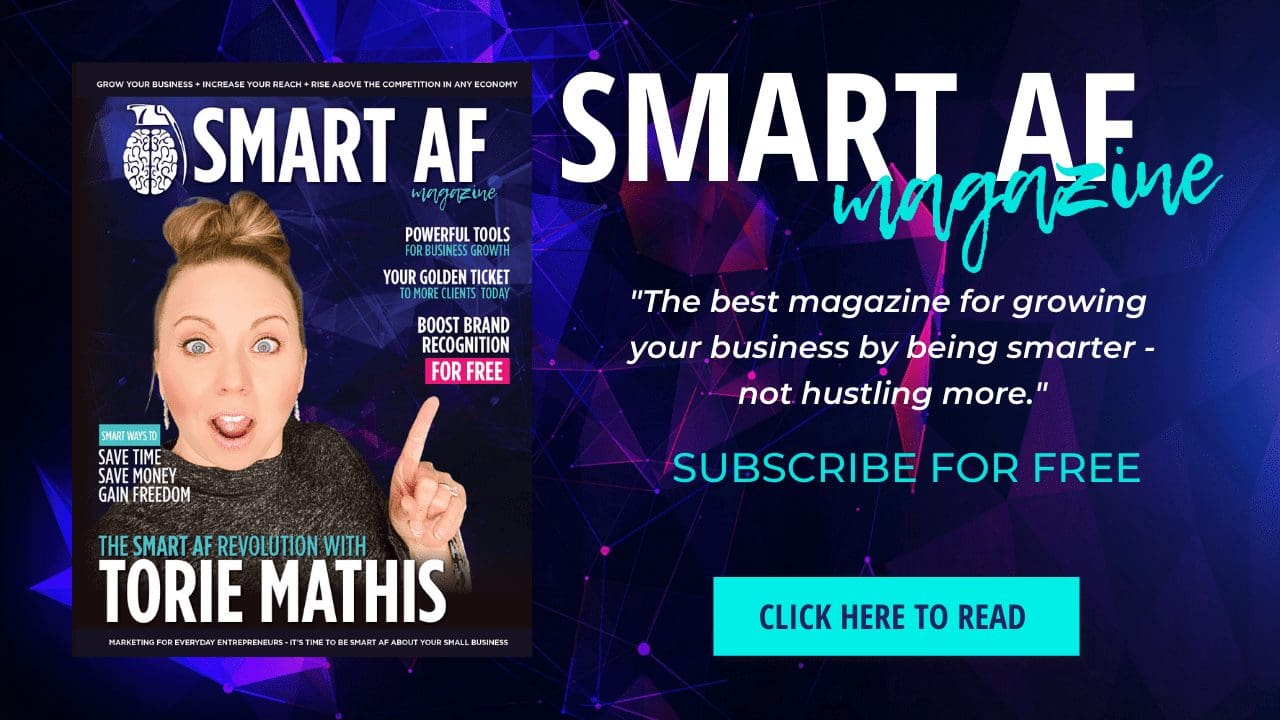

 I help entrepreneurs learn digital marketing.
I help entrepreneurs learn digital marketing.
